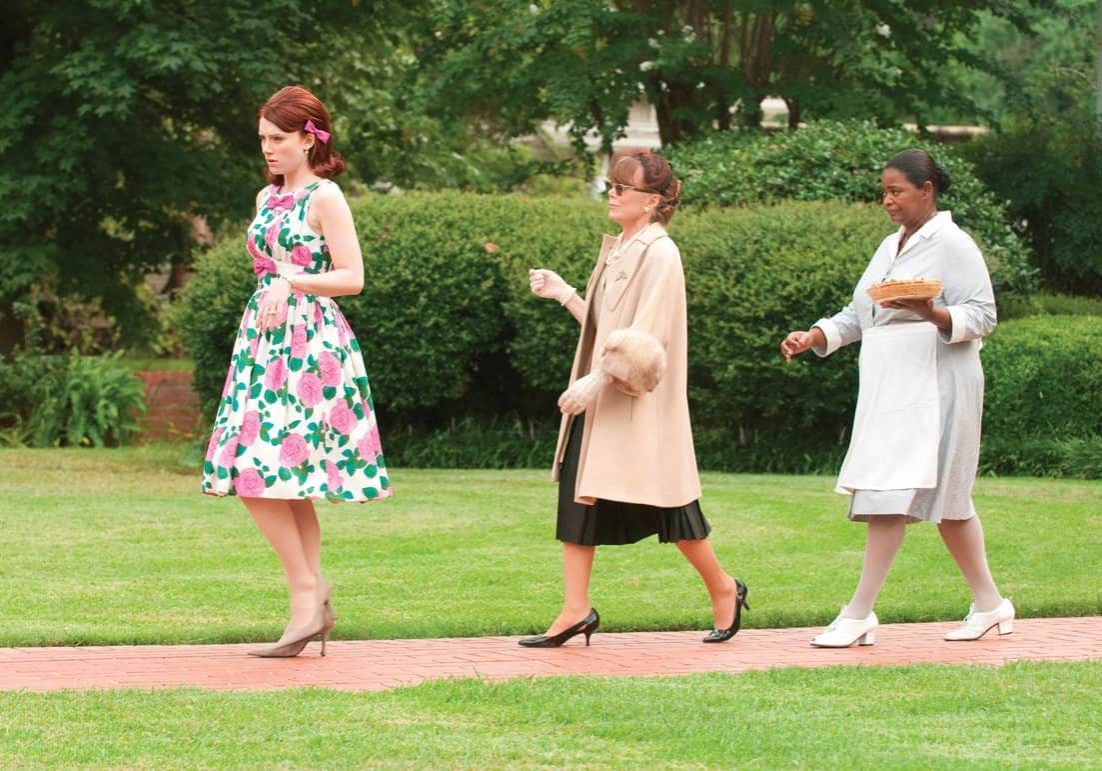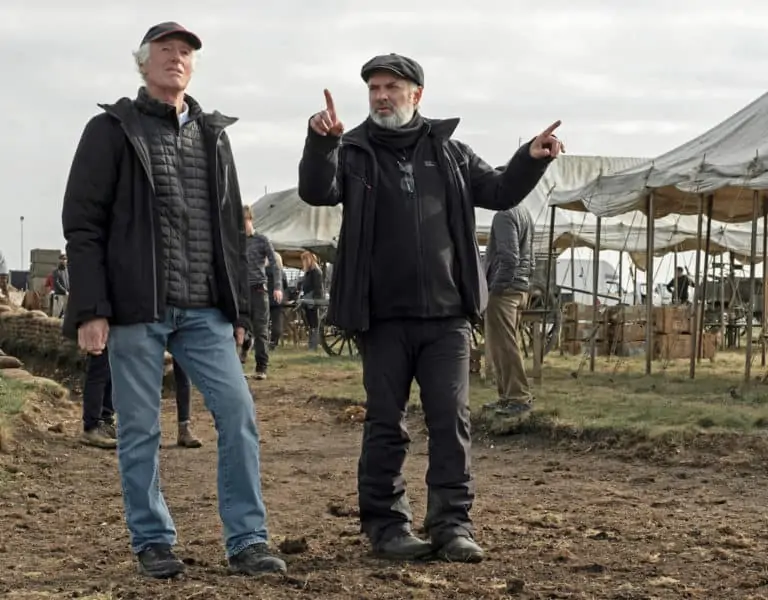Mississippi Mission
Stephen Goldblatt BSC, ASC / The Help

Mississippi Mission
Stephen Goldblatt BSC, ASC / The Help
Stephen Goldblatt ASC BSC was born in South Africa and raised in England, where he studied at the Guildford School of Photography and at the Royal College of Art. Still photography led him from photojournalism to portraiture. His earliest motion pictures included documentaries and anthropological films for Granada Television, and later he segued into commercials. Around 1980 he made his first narrative films.
Today, Goldblatt counts two Academy Award nominations and three Emmy nominations among his accolades. In 2007 he received the Plus Camerimage Lifetime Achievement Award. His credits feature include The Prince Of Tides, Batman Forever, The Cotton Club, Young Sherlock Holmes, Lethal Weapon, Joe Versus The Volcano, The Deep End Of The Ocean, The Pelican Brief, Closer, The Hunger and Rent. His was the eye behind many memorable television productions that raised quality standards and blurred the line between feature films and the small screen, namely Conspiracy, Path To War and Angels In America, the latter directed by Mike Nichols.
Most recently, this astonishing career path led to Greenwood, Mississippi, in the United States, where Goldblatt filmed The Help with a first-time director named Tate Taylor. The Help is a feature film based on a best-selling novel about changing societal norms in 1963. In the story, the unspoken code that governs the relationships between the races is broken when an unlikely friendship forms. In the following conversation, Goldblatt recalls the thought process behind the images.

Q: How did you first become involved with The Help?
SG: I was working with producer Michael Barnathan and Chris Columbus on Percy Jackson & The Olympics: The Lightning Thief, and they told me they’d met a great young writer with an incredible script. I read it and found it to be remarkable. We met and got along great. Tate had been friends with the author of the novel, Kathryn Stockett, since childhood. In a sense, The Help is a very personal story for the two of them. It’s quite funny. The best way to get an idea across is to make people laugh. It’s not really autobiographical, but it’s bound to the south, in a world and culture that they know intimately. It is a great place for me as a cinematographer to know that there is an authority on the subject, and he happens to be the director. That is excellent news.
Q: How did your filmmaking collaboration begin?
SG: We had to face that he was very inexperienced, by his own admission. Tate’s primary interest throughout was the narrative. What I hope to bring to this for him was my experience and abilities, to take the words and turn them into movement and pictures. And really I was given tremendous license to craft the sequences and to work with Tate on the story. We would meet and look at some pages. I would suggest what we could do with a particular shot or scene. It was very exciting for him because he realised that nothing was written in stone. It was malleable. Many of the suggestions he wrote into the script, and they became official pages. This made my ideas concrete – that was what we were going to shoot.
Q: Can you give an example?
SG: There is a scene in which a young journalist named Skeeter, played by Emma Stone, is coming home to see her mom. But it’s also an introduction to the home they live in, and the contrast that home has to the homes and ways of life of the help –the African American side of the story. So I wanted to show that place off, but not in a Gone With The Wind way. I wanted Skeeter to come in through the door, and as she went up the big staircase, I wanted the camera to travel with her, not cutting, doing a 360 and rising up through the stairwell. And it was technically tough because it was a real house in Greenwood, rather than a stage. We used a Towercam. The shot really brings the character and the audience through the house and into the story.
Q: Which format did you choose and why?
SG: Tate pretty much left that to me. The story is very white and black, literally. Viola Davis, who is very dark, holds in her arms a beautiful white baby, whom her character is surrogate mother to, and takes care of all the time. Technically, it’s difficult to keep that contrast, to make sure that Viola is not invisible, and that the baby is not blown out. The contrast ratio was as wide as it possibly can be. I just didn’t feel comfortable guinea-pigging with a digital system I wasn’t familiar with. Plus, we didn’t have that much money. Digital is more expensive at the high end than film. You need more crew and more support. Greenwood is a two-hour drive from the nearest big airport. I really felt more comfortable working with machinery that if it broke down, we could swap out a circuit board. EFilm set up a great closed-loop dailies system, which was a great help.
So we shot 35mm film, using Kodak Vision3 500T 5219. I shoot that at 320 ASA to give me a little more latitude. Knowing that I’ll be going to a DI, I want a thick negative so that I’ve got detail everywhere. I used Panavision camera equipment and Primo lenses, and my favorite 4.5:1 zoom and the 11:1 zoom.

"The best way to get an idea across is to make people laugh. It is a great place for me as a cinematographer to know that there is an authority on the subject, and he happens to be the director."
- Stephen Goldblatt BSC, ASC
Q: Did you use multiple cameras?
SG: No. I think we used a second camera on one sequence. I don’t like shooting multiple cameras, unless it’s a big action film requiring it. When there is dialog and intimacy, and you are in tiny rooms in real locations, there is not room for more than one camera. Even if there was room, I wouldn’t like to use two. There is always this fight to be in the right place at the right time, with the camera moving just the right way. And that is what I am always trying to do.
Q: What was your approach to camera movement?
SG: Will Arnot was the A-camera operator, and he is also a superb Steadicam operator. It’s great that he can jump from one right to the other, so you always have the same eye. We didn’t have a lot of money, so we couldn’t afford a Technocrane, which I love to use. Instead, we found a Chapman Titan crane in New Orleans, and we used it as often as we needed it. We did some pretty nice crane shots the old fashioned way. It was old school and it suited the story. We had an enormous amount of work. The film is 2 hours and 20 minutes. There were some long, hard days, with temperatures reaching 114 degrees. Having said that, people were pretty happy. There’s nothing like working on something great.

Q: Did working with a first time director affect your thinking?
SG: I think the effect Tate had on me specifically was how he wasn’t driven to picture, but he was driven to honesty. He knew the people and the story, as well as the town. So when Tate would say that someone wouldn’t do a certain thing, it was not based on an idea, but rather on true experience. It gave me further impetus in my work to reflect what seemed to be honest about the period and the writing. We had some wonderful actors like Viola Davis, who inspired the other beautiful young women to do their best work. Sometimes, something happens in a film. Sometime it’s a catastrophe. Nothing seems to work. But on the reverse, sometimes everything seems to work. And on this film, I really think it did. It was the absolute thrill of my life.










